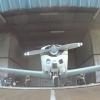How many times do you check gear down?
-
Members Online
- richardbrochu27
- prillayo03
- Paul Thomas
- 0TreeLemur
- Pinecone
- 802flyer
- NickG
- bhtitle
- deving22
- raymondscott0321
- bamace
- 1980Mooney
- rturbett
- sdmideas
- Jake@BevanAviation
- Parker_Woodruff
- jrwilson
- IvanP
- bencpeters
- N201MKTurbo
- Hudd
- bigmo
- DaleD
- Aaviationist
- Shrobby
- Oscar Avalle
- varlajo
- tankles
- Anthony C. Roberts
- 47U
- BlueSky247


Recommended Posts
Join the conversation
You can post now and register later. If you have an account, sign in now to post with your account.